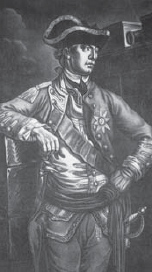
There can be few more perplexing characters in British military history than William Howe. Brave, successful, dynamic, he appeared to be everything the British needed to prosecute the war with the rebellious colonies, yet his performance was so patchy that some have even questioned whether he actually wanted to win.

General William Howe (1729–1814). Howe was the youngest of three brothers and acquired a reputation as a bold, even reckless soldier. His bravery was never in doubt, although his command of the British Army in America would lead many to question his motives. (LOC, LC-USZ62-361 6)
Howe first caught the attention of his superiors in 1758, when he earned praise from James Wolfe for his leadership of the 58th Regiment at Louisbourg. The following year he led the “forlorn hope” onto the Heights of Abraham, helping to take Quebec in the battle that saw Wolfe killed.
The death of his esteemed elder brother, George Augustus Howe, at Ticonderoga in 1758 was a huge blow, and the fact that £250 was donated by the commonwealth of Massachusetts to pay for a monument to George at Westminster Abbey added to Howe’s affection for the colonists. As member of parliament for Nottingham, Howe was a critic of the government’s policy toward the colonies and on his decision to take up a command in America he said “My going thither was not of my seeking. I was ordered, and could not refuse…”—hardly the most positive frame of mind in which to embark upon a military campaign.
Having led the assault on Bunker Hill with great courage, he was given the local rank of a full general in January 1776 and took over from Thomas Gage as commander-in-chief of British forces in the 13 colonies. Following the 1776 campaign, Howe was knighted, but the 1777 campaign was to prove disappointing, as he failed to defeat the Continental Army decisively and abandoned all ideas of linking up with John Burgoyne, moving southward from Canada along the Hudson as his part of the “Hudson strategy.” Successes for Howe at Brandywine, Germantown and Fort Mifflin, as well as the capture of Philadelphia, were nullified by Burgoyne’s defeat at Saratoga. Howe resigned in 1778 and returned home, his military career at an end.
Having joined the Royal Navy at the age of 14, Richard Howe progressed through a combination of ability and royal influence. He took the Irish title of Viscount Howe on the death of his older brother, George, on July 6, 1758, and by December 1775 he was a vice-admiral.
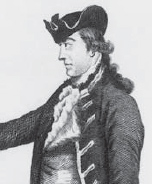
Admiral Lord Richard Howe (1726–99). Richard Howe was reluctant to take command of the fleet in America and insisted upon being made a peace commissioner as well, but in this capacity he was to encounter only disappointment and failure. (LOC, LC-USZ62-45254)
Howe was given command of the fleet that was to work in conjunction with his brother in 1776 and the two Howes were also granted limited powers as peace commissioners to negotiate an end to hostilities. Richard Howe’s performance in the War of Independence is overshadowed by his brother’s land-based activities, but he did well, never more so than when, after tendering his resignation, he remained in command long enough to fend off a large French fleet under d’Estaing in 1778.
Nicknamed “Black Dick” on account of his dark complexion, Howe’s greatest success came after the War of Independence. He led the relief of Gibraltar in 1782 and was lauded for his actions as commander of naval forces in the Channel against the French in 1794 in the Glorious First of June.
One of the three major-generals sent to Boston in 1775, Clinton was with William Howe at Bunker Hill and was promoted to the local rank of lieutenant-general shortly afterwards. He is characterized as being a constant irritant to his commanding officers, pushing endless plans and stratagems on them with little tact, while retreating into overly cautious inactivity when in command himself. There is some truth in this, as poor relations with Howe as a subordinate and later Cornwallis as a superior bear out, but at least one of Clinton’s suggestions was accepted with great effect—the flanking march at Long Island.
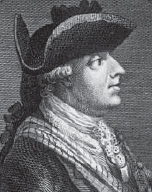
Lieutenant-General Henry Clinton (1730–95). A self-professed “shy bitch,” Clinton was also tactless when he put forward ideas, creating friction at the top of the British command structure. Often, however, his proposals were better than the plans adopted by William Howe. (LOC, LC-USZ62-452)
Also knighted in 1777, he returned to command the garrison of New York while Howe pursued Washington’s army, but he was unable to intervene effectively on Burgoyne’s behalf, a fact that he spent a good portion of his life trying to explain and excuse although he could hardly have been expected to do much more than he did.
Clinton became commander-in-chief on Howe’s resignation, but the war had now become complicated by the arrival of French support. Taking the bulk of the blame for Cornwallis’ defeat at Yorktown, Clinton worked hard to save his military career and ended it as Governor of Gibraltar in 1795.
Having first served as an officer in the 1st Foot Guards, seeing action at the battle of Minden, Cornwallis sailed for America in January 1776 with the reinforcements for Clinton’s Charleston campaign. After that misadventure he joined with Howe and took up position as his second in command at Long Island, where he saw some of the fiercest fighting of the day at the Old Stone House.
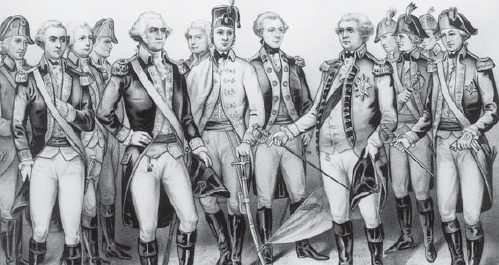
Lieutenant-General Charles, Earl of Cornwallis (1738–1805). Cornwallis will forever be remembered for surrendering to Washington at Yorktown, but he credited the French artillery commander, d’Aboville, with his defeat, saying, “it was to you that I should have surrendered.” (LOC, LC-USZ62-44927)
It was Cornwallis’ division that occupied Philadelphia in 1777 but he is (perhaps unfairly) remembered most for his surrender at Yorktown in 1781, effectively ending the war. It was the crowning misery of his dysfunctional relationship with Clinton, and his exploits in America were further tinged with sadness when his wife died during a visit home to Britain. He went on to better things in India, serving as governor-general from 1786 to 1794. As recognition for his fine service he was made 1st Marquis of Cornwallis in 1793.
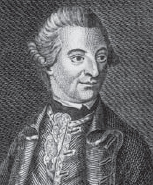
Major-General Hugh, Earl Percy (1742–1817). Percy was a talented soldier, but he was also known for the humane treatment of his men and his great generosity. Widows of his men killed at Bunker Hill were well provided for and he was a considerate landlord. (LOC, LC-USZ62-45225)
Percy earned distinction as a lieutenant-colonel at the battles of Bergen and Minden, before entering politics and marrying Lord Bute’s daughter. Popular, successful and well connected, he was aide-de-camp to George III by 1764. Despite disapproving of government policy toward the colonists he still offered his services, but, although his 5th Fusiliers were present at Bunker Hill, he was not—the result of either an illness or a disagreement with Howe, depending on whom you read. Promoted to major-general in September 1775, he commanded the rearguard of the flanking column at Long Island and was reportedly the first man to enter the fortifications at Fort Washington. Disagreements with Howe continued and, still unhappy with the war, he returned home in 1777, becoming Duke of Northumberland in 1786.
At the grand age of 69 von Heister was asked to lead the Hessian division by Landgrave Frederick II. Having first taken care to ensure his family would be taken care of should he die (and that all his debts would be written off immediately) he is reported to have declared: “Now your Serene Highness shall see what this old head and these bones can do.”
Despite being a capable leader of men, and performing well at Long Island, von Heister’s career was to end in bitter disappointment following the loss of the Hessian garrison at Trenton. A broken man, he returned home the following year and died “of grief and disappointment.”
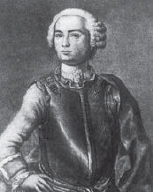
Lieutenant-General Wilhelm von Knyphausen (1716–1800). Von Knyphausen took over from von Heister as the commander-in-chief of German forces after the latter fell out with Howe and returned home. Those who saw him fight at Fort Washington professed amazement that he had not been killed or wounded. (LOC, LC-USZ62-52559)
Von Knyphausen’s family had a history of serving alongside the British—his father had been colonel of a regiment that had fought with Marlborough. Though he joined the Prussian Army in 1735, it wasn’t until 1775 that he was promoted to lieutenant-general and, like von Heister, he was advanced in years when he arrived in America with the second division of German mercenaries. Judging by accounts of his performance at Fort Washington, his first taste of action in America, von Knyphausen must have been a sprightly 60-year-old and he took over command of German forces when von Heister returned home in 1777. He only retired in 1782.
A more iconic figure is hard to find than that of the leader of the American forces in the War of Independence. George Washington became the symbol of American military strength and, although his abilities as a tactician have been justifiably questioned, his defining accomplishment was in somehow keeping an army in the field to oppose the British. That army may sometimes have dwindled to just a few thousand men, but it was always enough to keep the flame flickering. Washington also understood only too well the impact that even very minor victories could have on morale, public opinion and Britain’s willingness to prolong the struggle, which is why his small-scale victories at Trenton and Princeton, coming after a string of British successes, were so crucial.
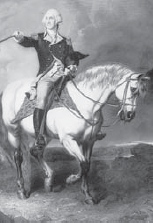
General George Washington (1732–99). For a long time an untouchable icon, modern historians tend to agree that Washington was an indifferent general early in his career—but he improved and, more importantly, was able to keep his army in the field, however small it occasionally became. (LOC, LC-USZ62-8272)
Washington served in the Virginia Militia in the French and Indian War and witnessed the fate of Major-General Edward Braddock at Monongahela in 1755. The life of a wealthy plantation owner beckoned, but he set it aside to take command of the Continental Army at Boston in 1775. He was frequently dismissive of his men’s abilities, despaired of the short-term enlistments that constantly threatened to leave him with only a skeleton army and had to hold his force together in the face of British military superiority, a bungling and totally inadequate supply system, and brutally hard winters that were more of a risk than any number of redcoats.
Critically, as Washington’s men learned, so did he, and he seems to have quickly realized that merely keeping an army in the field would eventually force the British to abandon a hugely expensive war. Independence won, he stepped down as commander-in-chief as the Continental Army was disbanded, but would go on to earn yet more distinction as his country’s first president, in 1789.
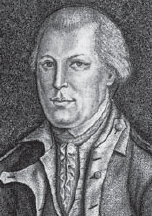
Major-General Nathaniel Greene (1742–86). Greene’s absence at the battle of Long Island due to illness is often cited as a contributory factor to the defeat, and it certainly had an effect, but even he had thought fit to post only a five-man patrol at the otherwise open Jamaica Pass. (LOC, LC-USZ62-45507)
Widely regarded as the best general on the American side, Greene turned his back on the peace-loving life of a Rhode Island Quaker family and had risen to brigadier-general by 1775. Originally in charge of the defenses at Long Island, he was taken ill with a fever and replaced by Israel Putnam just a week before the battle. Now a major-general, Greene subsequently saw his first action at Harlem Heights, which was a morale-boosting encounter for the Continentals, but he later made a serious error of judgment in trying to hold Fort Washington, resulting in one of the most severe reverses suffered by the Americans.
Greene improved with experience and did well at Monmouth, where he resisted an attack from Cornwallis that might have routed the Continentals. Further distinguished service followed at Newport, Rhode Island, on August 29, 1777, at the same time as he was performing well as quartermaster general. Disagreements with Congress dogged his career but Washington had great faith in his general and appointed him to command of the Southern Department in October 1780, where Greene put in his best work for the rebels, notably in defeating Banastre Tarleton at Cowpens on January 17, 1781. He then gave Cornwallis a mauling at Guildford Courthouse, helping to set the stage for Yorktown.
Financially ruined by the war, he took up residence at a plantation in Savannah, a gift of the people of Georgia for his service. He was just 44 when he died suddenly of sunstroke.
Having served as an ensign in the British Army from 1744, advancing to lieutenant in the 44th Foot in 1751, Charles Lee saw action with Braddock, Horatio Gates, Washington and Thomas Gage in the French and Indian War. As a colonel he distinguished himself under Burgoyne in Portugal in 1762 and, when his regiment was disbanded, he became a soldier of fortune, attaining the rank of major-general in the Polish Army in 1767. He therefore believed he had a strong claim to command the Continental Army when his allegiance switched to the Patriots. In the event he was second only to Washington, and although he performed well enough at Boston there was friction between the two men. Dispatched to attend to the fortification of New York in early 1776, he was later switched to command of the Southern Department and only returned to Washington in time for the engagement at White Plains.
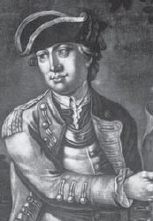
Major-General Charles Lee (1732–82). Lee, though a professional soldier, had a high opinion of the value of militia (in stark contrast to Washington), believing that they operated best as a “swarm of mosquitoes” to endlessly harass an enemy without presenting a solid target. (LOC, LC-USZ62-3617)
Here his story takes a sad turn. Dawdling on his way to join forces with Washington in New Jersey, he was captured by a British patrol on December 13, 1776. While in captivity he offered the British advice on how to defeat the Americans, was considered for return to Britain to stand trial as a traitor and lost the novelty of a military background as his fellow generals in the Continental Army gained experience during his imprisonment. Finally exchanged in late 1777, he performed miserably at Monmouth, retreating when ordered to attack by Washington and prompting a ferocious and public exchange of opinions with the commander-in-chief on the battlefield. Following a court martial, a duel with Colonel John Laurens and, finally, dismissal from the Continental Army in 1780 after writing an incendiary letter to Congress, the man who once considered himself the ideal candidate to direct the struggle for independence withdrew in some disgrace to Philadelphia, where he died in 1782.
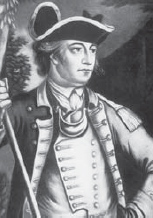
Major-General John Sullivan (1740–95). Sullivan acted as an envoy for the British while under captivity following Long Island, helping arrange a peace conference in September 1776 and earning the disdain of some of his fellow officers. (LOC, LC-USZ62-39567)
Born in New Hampshire, Sullivan nailed his colors to the Patriotic mast early, leading a raid to seize weapons from Fort William and Mary in 1774. He served as a brigadier-general with Washington at Boston and was then ordered to join the American Army in Canada. Returning to Washington’s side just in time to command the American positions at Long Island for four days, before being replaced by Israel Putnam, he was captured and quickly exchanged. Command of part of the attacking forces at Trenton and Princeton was followed by his expedition to subdue the Iroquois in northwestern New York. An army of 5,000 men was given to him for the task and his scorched-earth policy, though it made him a national hero for many years, has recently been seen as nothing more than attempted genocide. His last public duty was to serve as the governor of New Hampshire.
It is difficult to get a glimpse of the real Israel Putnam given the mass of legend that swirls around this colorful character. Even discounting the killing of a large wolf in her den, his story is remarkable. Nearly burnt at the stake by Indians in 1758, he was shipwrecked off Cuba, opened a tavern and married a wealthy widow. In 1779, at the age of 61, he reputedly galloped down a flight of rocky steps to escape capture by the British, a feat rendered no more likely by the building of a monument to it at the site.
His performance in the War of Independence was indifferent and he probably should never have risen above colonel. As a major-general he commanded the forces at Long Island, but the career of ‘Old Put’ slowly fizzled out after that. He retired from the army following a stroke in December 1779.